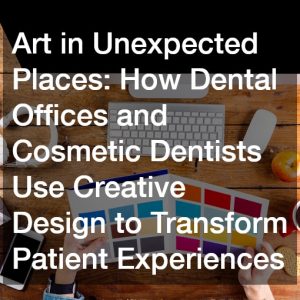
Trauma is a deeply distressing or disturbing experience that can have significant and long-lasting effects on an individual’s mental and physical health. Many people who have experienced trauma may struggle with symptoms of post-traumatic stress disorder (PTSD), such as flashbacks, anxiety, and difficulty regulating emotions. They may also have difficulty trusting others, difficulty maintaining healthy relationships, and difficulty managing daily life tasks.
How can art be therapeutic? While traditional forms of therapy, such as cognitive-behavioral therapy and medication, can be effective in treating the symptoms of trauma, some individuals may also find relief and healing through artistic expression. We will explore the ways in which art can be therapeutic for people who have suffered trauma, examining the benefits and potential limitations of this approach.
Traumatic events can include natural disasters, accidents, physical or sexual abuse, war, or other types of violence. The experience of trauma can have significant and long-lasting effects on an individual’s mental and physical health, as it can disrupt their sense of safety and security, and their belief in their own abilities to cope with and manage their lives.
One of the most common mental health conditions that can result from trauma is post-traumatic stress disorder (PTSD). Symptoms of PTSD can include flashbacks, in which the individual relives the traumatic event; avoidance, in which the individual tries to avoid situations or people that remind them of the event; and hyperarousal, in which the individual is easily startled and has difficulty regulating their emotions. These symptoms can significantly interfere with an individual’s daily life and their ability to function in relationships and at work or school.
Different Forms of Trauma

Disease
Cancer can be a deeply distressing and traumatic experience for individuals and their loved ones. The diagnosis of cancer can be accompanied by a range of emotions, including shock, fear, and grief. The treatment process, which may involve surgery, chemotherapy, and radiation, can also be physically and emotionally challenging. The uncertainty and unpredictability of the disease can add to the stress and trauma of the experience. Books for cancer caregivers can help. Heart diseases, such as peripheral artery disease, can also be very traumatic experiences for families.
Fire and Death
A fire can be a traumatic event. A fire damage emergency door with fire rated glass and bullet resistant glass, and other devices or escape routes, can help prevent suffering or death, but a fire can be a deeply traumatic time for those experiencing it. Death can also be traumatic, as many a cremation professional can attest. Losing a loved one can be one of the most traumatic and depressing circumstances a person can face in their lifetime.
Divorce and Legal Issues
Divorce, child custody issues, and family trauma are very common, and affect the lives of many. Serious legal issues involving criminal law and jail bond issues, with a family member for example, can also be quite traumatic.
How Therapy Can Help
Each of these forms of trauma require specialized care and sensitivity to address. In some cases, art therapy can be helpful. Traditional forms of therapy for social anxiety, for example, such as cognitive-behavioral therapy and medication, can be effective in treating the symptoms of trauma and PTSD. However, some individuals may also find relief and healing through artistic expression. Art therapy is a form of psychotherapy that uses art as a medium for self-expression, communication, and exploration. It can be an effective way for individuals to process and cope with their emotions, to improve their self-esteem and sense of accomplishment, and to connect with others. However, it is important to recognize that art therapy may not be the right approach for everyone and that it should be used in conjunction with other forms of treatment.
Art As a Means of Self-Expression

For many individuals who have experienced trauma, it can be difficult to put their feelings and experiences into words. Art, on the other hand, offers a unique means of self-expression that allows individuals to communicate their thoughts and emotions in a way that is nonverbal and often more abstract. How can art be therapeutic? By creating art, individuals can explore their feelings and experiences in a way that may be less intimidating or threatening than talking about them directly. This process can help individuals to better understand and make sense of their experiences, and can also be a way for them to process and cope with their emotions in a healthy and constructive manner.
The ability to express oneself and communicate one’s thoughts and emotions is a fundamental aspect of human experience. However, for individuals who have experienced trauma, this process can be particularly challenging. Trauma can have a profound impact on an individual’s mental and emotional well-being and can disrupt their ability to communicate and express themselves in a healthy and effective manner.
One way in which individuals who have experienced trauma can communicate and express themselves is through art. How can art be therapeutic? Art offers a unique means of self-expression that allows individuals to communicate their thoughts and emotions in a way that is nonverbal and often more abstract. This can be particularly beneficial for individuals who have experienced trauma, as it allows them to explore their feelings and experiences in a way that may be less intimidating or threatening than talking about them directly.
The act of creating art can be therapeutic in itself, as it requires the individual to focus their attention on the present moment and engage in a task that requires their full attention and presence. How can art be therapeutic? This can provide a sense of distraction and escape from the traumatic memories and thoughts that may otherwise consume their thoughts. Furthermore, the creative process itself can be cathartic, as individuals have the opportunity to express their emotions through the medium of art. This can provide a sense of release and relief, and can help individuals to feel more in control of their emotions and experiences.
In addition to its therapeutic benefits, art can also be a way for individuals to better understand and make sense of their experiences. How can art be therapeutic? By creating art, individuals can explore their feelings and experiences in a way that is more abstract and open-ended, allowing them to gain new insights and perspectives. This process can be especially helpful for individuals who have experienced trauma that has left them feeling confused or disoriented. By engaging in the creative process, individuals can begin to make sense of their experiences and to find meaning and purpose in them.
Overall, art can be a powerful and effective means of self-expression and healing for individuals who have experienced trauma. By providing a means of communication and self-expression that is nonverbal and often more abstract, art can help individuals to better understand and make sense of their experiences, and to cope with their emotions in a healthy and constructive manner.
Art As a Way to Process and Cope With Emotions

In addition to providing a means of self-expression, art can also be an effective way for individuals to process and cope with the emotions that arise in response to trauma. How can art be therapeutic? The act of creating art requires the individual to focus their attention on the present moment and engage in a task that requires their full attention and presence. This can provide a sense of distraction and escape from the traumatic memories and thoughts that may otherwise consume their thoughts. Furthermore, the creative process itself can be cathartic, as individuals have the opportunity to express their emotions through the medium of art. This can provide a sense of release and relief, and can help individuals to feel more in control of their emotions and experiences.
The experience of trauma can have a profound impact on an individual’s mental and emotional well-being, and can result in a range of difficult and overwhelming emotions. These emotions can be challenging to cope with and can interfere with an individual’s ability to function in their daily life. How can art be therapeutic? Art can be an effective way for individuals to process and cope with the emotions that arise in response to trauma, and can provide a sense of relief and healing.
One of the key benefits of using art as a means of coping with emotions is that it requires the individual to focus their attention on the present moment and engage in a task that requires their full attention and presence. This can provide a sense of distraction and escape from the traumatic memories and thoughts that may otherwise consume their thoughts. The act of creating art can be a form of mindfulness, as it requires the individual to be present in the moment and to fully engage with the task at hand. This can be a powerful tool for individuals who are struggling with the overwhelming emotions that can result from trauma.
In addition to providing a sense of distraction and escape, the creative process itself can be cathartic, as individuals have the opportunity to express their emotions through the medium of art. This can provide a sense of release and relief, and can help individuals to feel more in control of their emotions and experiences. The process of creating art can be a way for individuals to process and make sense of their emotions, and can provide a healthy and constructive outlet for the expression of these emotions.
Overall, the use of art as a means of coping with emotions can be a powerful and effective tool for individuals who have experienced trauma. By providing a means of distraction, catharsis, and self-expression, art can help individuals to feel more in control of their emotions and to find relief and healing in the aftermath of trauma.
Art As a Means of Social Connection

For many individuals who have experienced trauma, social isolation can be a common experience. How can art be therapeutic? Art can provide a way for these individuals to connect with others who may have similar experiences or who may be able to offer support and understanding. By joining an art therapy group or sharing their art with others, individuals can feel a sense of belonging and connection that may be lacking in other areas of their lives. This can be particularly important for individuals who have experienced trauma as a result of social isolation or loss of relationships, as it can help them to rebuild their sense of self and their connections to others.
Art As a Way to Improve Self-Esteem
Creating art can also be a way for individuals to improve their self-esteem and sense of accomplishment. By engaging in a task that requires focus and effort, and by creating something that is uniquely their own, individuals can feel a sense of pride and accomplishment. This can be particularly important for individuals who have experienced trauma, as they may struggle with feelings of self-worth and may have lost confidence in their abilities. How can art be therapeutic? Engaging in art can help to rebuild these feelings of self-worth and can also provide a sense of purpose and meaning in the aftermath of trauma.
The use of art as a means of self-expression can be particularly helpful for individuals who have experienced trauma, as it allows them to communicate their thoughts and emotions in a way that may be less intimidating or threatening than talking about them directly. This can be especially true for individuals who have experienced trauma that is difficult to talk about, such as physical or sexual abuse, or for those who may feel shame or guilt about their experiences.
Art can also provide a safe and supportive space for individuals to explore their feelings and experiences. In the process of creating art, individuals can connect with their emotions in a way that is both cathartic and therapeutic. This can be especially true for individuals who have experienced trauma that has left them feeling disconnected from their emotions or overwhelmed by them. By engaging in the creative process, individuals can learn to regulate their emotions and cope with them in a healthy and constructive manner.
How Can Art Be Therapeutic?

In addition to its therapeutic benefits, art can also be a way for individuals to better understand and make sense of their experiences. By creating art, individuals can explore their feelings and experiences in a way that is more abstract and open-ended, allowing them to gain new insights and perspectives. This process can be especially helpful for individuals who have experienced trauma that has left them feeling confused or disoriented. By engaging in the creative process, individuals can begin to make sense of their experiences and to find meaning and purpose in them.





